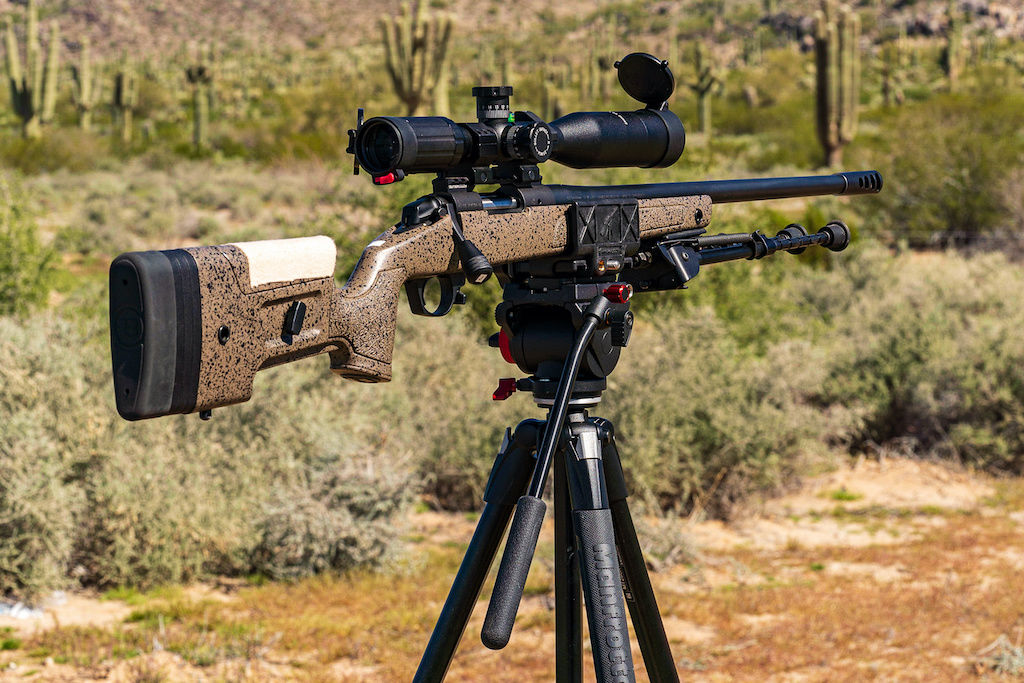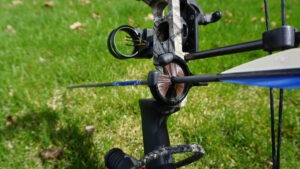If you’re a firearms enthusiast or a competitive shooter, you know that choosing the right powder for your ammunition is crucial. When it comes to 223 55gr rounds, the right powder can significantly impact performance and accuracy. In this comprehensive guide, we’ll explore the different factors to consider when selecting powder for your 223 55gr loads, review some of the top-rated powders in the market, and provide important safety measures to follow when handling powder.
Understanding the Basics of 223 55gr Powder
Before diving into the specifics, let’s first understand the role that powder plays in ammunition. Powder is the propellant that generates the gas pressure needed to propel the bullet out of the barrel. It ignites when the primer is struck, creating a controlled explosion that propels the bullet forward with precision.
Now, let’s explore the fascinating world of 223 55gr powder and its impact on ammunition performance.
The Role of Powder in Ammunition
When it comes to 223 55gr rounds, the right powder can affect muzzle velocity, recoil levels, and even accuracy. Different powders have varying burn rates, granule size, and temperature sensitivities, all of which can impact the overall performance of the ammunition.
Let’s delve deeper into the key features of 223 55gr powder to gain a comprehensive understanding.
Key Features of 223 55gr Powder
When selecting powder for your 223 55gr loads, there are a few key features to consider:
- Burn rate: The burn rate of the powder determines the pressure curve inside the barrel and the resulting muzzle velocity. Different burn rates are more suitable for specific applications and barrel lengths.
- Powder granule size: The size of the individual powder granules can influence ignition consistency and overall burn rate. Finding the right balance of granule size is essential for reliable and accurate performance.
- Sensitivity to temperature: Powder can be affected by temperature variations, leading to differences in pressure and velocity. Understanding the temperature sensitivity of the powder is crucial, especially if you plan on shooting in extreme weather conditions.
Choosing the appropriate burn rate is crucial for optimizing the performance of your 223 55gr ammunition. A slower burn rate can provide a more consistent pressure build-up, resulting in improved accuracy. On the other hand, a faster burn rate can maximize muzzle velocity, making it ideal for long-range shooting.
The granule size of the powder affects how it ignites and burns. Smaller granules tend to ignite more quickly and uniformly, ensuring consistent performance shot after shot. However, larger granules can provide a slower and more controlled burn, which can be advantageous in certain shooting scenarios.
Temperature sensitivity is an important consideration when selecting powder for your 223 55gr loads. Some powders are more stable and less affected by temperature changes, ensuring consistent performance regardless of the weather conditions. Others may exhibit more significant variations in pressure and velocity, requiring careful load development and adjustment.
By carefully considering the burn rate, powder granule size, and temperature sensitivity of the powder you choose, you can optimize the performance of your 223 55gr ammunition. Remember, each component of the ammunition plays a vital role in achieving accuracy, consistency, and reliability.
Factors to Consider When Choosing 223 55gr Powder
Now that we’ve covered the basics, let’s delve into the specific factors you should consider when selecting powder for your 223 55gr loads.
Burn Rate
The burn rate of the powder is one of the most critical factors to consider. It determines the speed at which the powder burns, which directly affects the pressure curve and muzzle velocity. Different burn rates are suitable for various applications, such as target shooting or hunting.
When selecting a powder for your 223 55gr loads, it’s important to understand the burn rate that will best suit your needs. A faster burn rate can provide higher velocities, making it ideal for long-range shooting or hunting scenarios where a flatter trajectory is desired. On the other hand, a slower burn rate can offer more consistent pressures and better accuracy for precision shooting or competitions.
Experimenting with different powders and their burn rates can help you find the perfect balance between velocity and accuracy for your specific firearm and shooting style. It’s essential to consider your intended use and shooting goals when making this decision.
Powder Granule Size
The size of the powder granules can impact ignition consistency and overall burn rate. Fine powders tend to burn faster, while larger granules burn slower. Experimenting with different granule sizes can help you find the optimal balance for your specific firearm and shooting needs.
When it comes to powder granule size, there are a few factors to consider. Fine powders with smaller granules tend to ignite more quickly, resulting in faster burn rates. This can be advantageous for shooters who want to maximize their muzzle velocity and achieve consistent ignition. However, fine powders can also be more sensitive to changes in temperature and may require careful attention to ensure reliable performance.
On the other hand, powders with larger granules burn at a slower rate, offering more controlled and consistent ignition. This can be beneficial for shooters who prioritize accuracy and precision over raw velocity. However, it’s important to note that larger granules may require more space in the case, potentially reducing the available powder capacity and affecting overall performance.
Ultimately, the choice of powder granule size depends on your specific shooting requirements and preferences. Experimenting with different sizes can help you find the perfect balance between ignition consistency, burn rate, and overall performance.
Sensitivity to Temperature
Some powders are more sensitive to temperature variations than others. This means that the performance of your ammunition can be affected by changes in ambient temperature. It’s important to consider the temperature sensitivity of your chosen powder, especially if you anticipate shooting in extreme weather conditions.
When selecting a powder for your 223 55gr loads, it’s crucial to understand how temperature can impact its performance. Certain powders may exhibit changes in burn rate and pressure with temperature fluctuations, which can affect the consistency and accuracy of your shots.
If you plan to shoot in extreme weather conditions, such as hot summer days or cold winter mornings, it’s essential to choose a powder that is less sensitive to temperature variations. These powders are designed to maintain consistent performance across a wide range of temperatures, ensuring reliable ignition and predictable ballistics regardless of the weather.
However, it’s important to note that powders with lower temperature sensitivity may sacrifice some velocity or other performance characteristics compared to powders that are more temperature-sensitive. Finding the right balance between temperature stability and desired performance is key.
Additionally, it’s worth considering the storage conditions of your ammunition. If you live in an area with significant temperature fluctuations or plan to store your ammunition in environments with varying temperatures, selecting a powder with lower temperature sensitivity can help maintain the integrity and reliability of your loads over time.
By carefully considering the temperature sensitivity of your chosen powder, you can ensure consistent performance and reliable results, regardless of the weather conditions you encounter during your shooting activities.
Top-Rated 223 55gr Powders in the Market
Now that we have a good understanding of the factors to consider, let’s explore some of the top-rated powders available for 223 55gr loads.
Review of Popular Brands
1. Brand A: Known for its consistent performance and low temperature sensitivity, Brand A’s powder is a popular choice among precision shooters. It offers excellent burn rate control and consistent velocities, making it suitable for competitive shooting or long-range accuracy.
When it comes to precision shooting, consistency is key. Brand A’s powder delivers just that, ensuring that each shot you take is as accurate as the last. Its low temperature sensitivity means that it performs consistently regardless of weather conditions, making it a reliable choice for shooters who often find themselves in varying environments.
One of the standout features of Brand A’s powder is its excellent burn rate control. This means that the powder burns at a consistent rate, resulting in consistent velocities and ultimately, consistent accuracy. Whether you’re shooting at the range or competing in a precision shooting competition, you can trust Brand A’s powder to deliver the performance you need.
2. Brand B: With its fine granules and medium burn rate, Brand B’s powder is versatile and reliable. It provides good accuracy across a wide range of bullet weights and is well-suited for both target shooting and hunting applications.
When it comes to versatility, Brand B’s powder is hard to beat. Its fine granules allow for easy metering, making it a breeze to load your rounds with precision. The medium burn rate of Brand B’s powder ensures that it performs well across a wide range of bullet weights, giving you the flexibility to experiment with different loads and find the perfect combination for your shooting needs.
Whether you’re hitting the range for some target practice or heading out into the field for a hunting trip, Brand B’s powder has got you covered. Its reliable performance and good accuracy make it a trusted choice for shooters of all levels.
Pros and Cons of Each Powder
Brand A:
- Pros: Consistent performance, low temperature sensitivity, excellent for precision shooting.
- Cons: Slightly more expensive than other options, availability can be limited.
- Additional Pro: Brand A’s powder is known for its clean burning characteristics, resulting in less fouling and easier cleaning.
- Additional Con: Due to its popularity, Brand A’s powder may sometimes be out of stock, requiring shooters to plan ahead and stock up.
Brand B:
- Pros: Versatile, reliable, suitable for various applications.
- Cons: Moderate temperature sensitivity, may not offer the highest precision for competitive shooting.
- Additional Pro: Brand B’s powder is known for its consistent metering, making it easy to load rounds with precision.
- Additional Con: Shooters who prioritize absolute precision in competitive shooting may find that Brand B’s powder falls slightly short of their expectations.
Safety Measures When Handling 223 55gr Powder
When working with any type of powder, safety should always be a top priority. Here are some important safety measures to follow when handling 223 55gr powder.
Storage Guidelines
1. Store powder in a cool, dry place away from heat sources and open flames.
2. Use sturdy, sealed containers specifically designed for powder storage.
3. Keep powder away from children and unauthorized individuals.
Usage Precautions
1. Wear appropriate protective gear, such as gloves and safety glasses, when handling powder.
2. Avoid creating excessive dust when pouring or measuring powder.
3. Always follow the recommended powder charge weights specified in reloading manuals.
Frequently Asked Questions About 223 55gr Powder
Now, let’s address some common questions that often arise regarding 223 55gr powder.
How to Measure Powder Accurately
Accurate powder measurement is crucial for consistent performance and safety. It’s recommended to use a reliable powder scale or measuring device specifically designed for reloading purposes. Follow the manufacturer’s instructions for precise measurements, and always double-check your measurements before proceeding with reloading.
Can Different Powders Be Mixed?
Mixing different powders is strongly discouraged. Each powder is formulated to perform under specific conditions and requires precise measurements for optimal performance. Mixing powders can result in inconsistent pressures and velocities, potentially leading to dangerous situations. It’s best to stick to a single powder for each load and follow established reloading guidelines.
By considering the factors discussed in this guide and selecting a powder that aligns with your shooting needs, you can enhance the performance and accuracy of your 223 55gr rounds. Remember to prioritize safety at all times and follow proper handling procedures when working with powder. Now, go out there and make every shot count!


